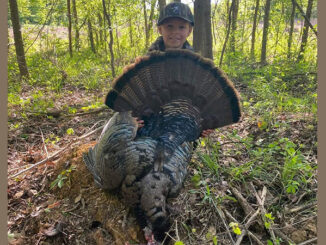
For anglers to be successful, the target-of-the-day must be kept in the dark from the angler above, yet some fish don’t seem to care or are too involved in feeding to recognize the meal they are getting ready to eat has a razor-sharp hook hanging out.
The species and water clarity makes a major difference in the ability of fish to be able to see the gear. In places where the water is gin-clear, anglers must make an attempt to conceal all hooks, line, swivels and sinkers as much as they can.
Spanish mackerel have two qualities that help them eat and avoid being eaten. They have excellent vision and can travel at a very high rate of speed, and anglers must take this into consideration. Many will use long, light monofilament or fluorocarbon leaders to put enough distance between the swivel and the terminal tackle or bait, but Spanish mackerel have razor-sharp teeth that will slice through 20-pound test nylon in the blink of an eye. The only way to avoid this is to use heavy, nylon or wire leader. Neither of these choices have a natural concealment property, yet wire is very abrasion-resistant, even at very small diameters.
Jason Burton of Murrell’s Inlet Fishing Charters will fish with monofilament and then incorporate a short, small, wire leader when free-lining live mullet to Spanish mackerel.
“I omit a swivel and tie 4 to 6 inches of flexible, steel leader directly to the main line,” Burton said. “The wire needs to be double the length of the bait. I use the lightest-flex wire I can find and tie it directly to the leader using an Albright knot.”
Tying directly to the line eliminates the need for a swivel, and the line-to-line connection knots are super strong. In addition to the Albright knot, a double surgeon’s knot can be tied.



Be the first to comment